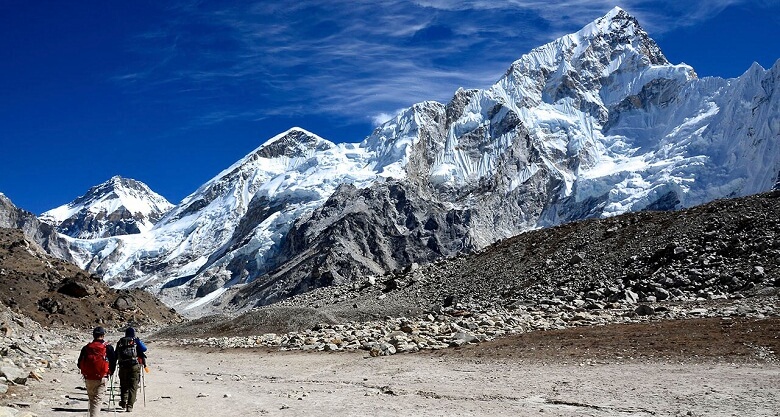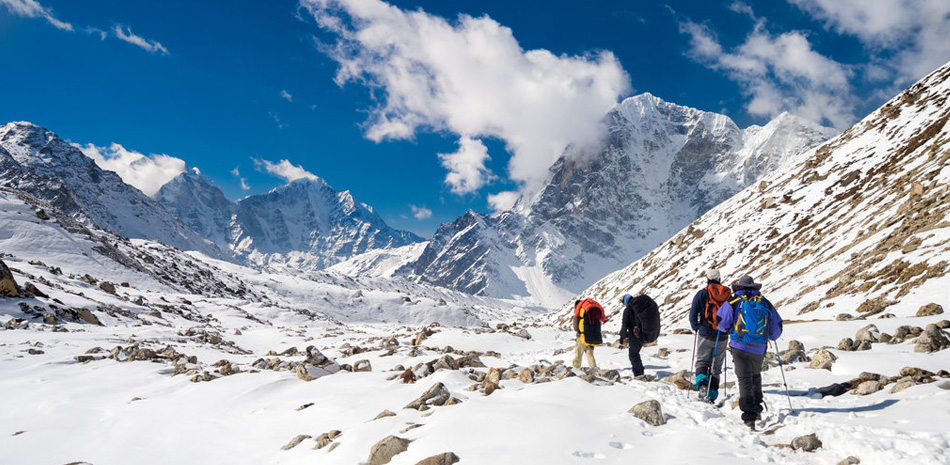Trekking in Nepal is one of the most exciting, surreal, and arduous adventures you can take. There is so much “unknown” to still be discovered. Perhaps the biggest mysteries you will unlock will come from within yourself. Indeed, many who embark on the Everest Base, Gosainkunda, or Annapurna treks return with absolutely different view of their place on this planet.
Is it the people, the scenery, or the fact that you immersed yourself in a beautiful survival experience and came through? Probably all.
Prepare Mentally and Physically for your Trek
You think survival might sound like an extreme word for these treks, but it’s not. Many instances along your path are life challenging. From narrow paths traversing deep gorges, to ice bridges, to the altitude adjustments in your body, there are real mental and physical feats you will have to face. But they are all “doable” (the people who live up here do it all the time!).
When you return to Kathmandu or Pokhara after your 2 weeks in the Himalaya, you will be a new person. You will want to celebrate and reflect. You will be at the same time introspective and extroverted. What a great combination!
So, before you go for your hike into Himalayan Spiritual Enlightenment, prepare yourself to make the best of it. Here are some things you’ll need: Things You Need for Nepal Trekking:
1) Good shoes. It is your #1 best investment. An old proverb says, “Your feet carry you forward in life, take good care of them.” Get a pair of shoes that are sturdy, broken in, and infallibly comfortable. You will never want to see them again after your trek, so give them up to the porter or guide who may ask for them at the end of your journey. When you see the broken shoes and plastic sandals that Himalayan people scale the mountains in, you will be glad you did. For more on good shoes, read the article on this blog titled “Trekking in Everest Area – Choose Shoes Wisely.”
2) A light backpack. Every gram of weight you carry will feel like ten times more than you think after 2-3 days of trekking in the Himalayas. It’s not just the constant uphill climb, it’s also the lessening of oxygen as you get higher each day. So, start with a backpack that does not weigh much itself, and then pack as light as you can.
3) Multi-function clothing. Yes, it’s a 14 day or more ordeal, but you really only need 1-2 changes of clothing. Wear your pants, shirts and socks as many days in a row as you can. Nobody cares what you look like – honestly. Showers are limited or non-existent, but there is a water spout or stream or similar at each tea house, so use it and just keep your body as clean as possible. This will keep your clothes a little fresher. Don’t take denim jeans or jackets. They are heavy, dry slowly, and not very flexible. Take neoprene or nylon clothes and be sure to have a fleece and some warm layers for underneath. Himalayan passes are freezing. You can go from extremely hot to extremely cold in the same day. Avoid cotton everything. If you can buy nylon underwear, they are light and dry quickly if you have to wash them, so get those. Men can find these at most sports stores (think Under Armour). Do take some type of light raincoat, you will probably need it for Sep, Oct, Apr, and May. Other trekking months can be extremely cold, so get some thermal cold weather gear that is not too bulky.
4) Just a few gadgets. You need a flashlight (small), a camera, spare batteries, and that’s about it. Electricity is sparse on the rooftop of the world. Some villages do not have any electricity at all, and the ones that do are subjected to “load shedding” (long power outages) like the rest of us in Nepal. So don’t bother with electronic stuff that you don’t really need. If you are making a video blog, or documentary or the like, by all means, take your stuff and consider hiring a porter. Just be sure you have charged back-up batteries for everything.
5) Get 100 rupee notes. Before you leave Kathmandu or Pokhara for your trek, get your big notes changed into 100 rupee denominations. You will find almost no one that can give you change for 1000 rupees on your trekking route. Even 500 rupees can be hard to change. You will be looked upon as the rich, inconsiderate tourist flashing your money around if you pull out a 1000 rupee note at a teahouse. Just get some small money. Your trekking outfitter usually provides your food and lodging, so you should not need a lot of money enroute. However, things like a beer or soda or snacks are “extra” and way more expensive than in Kathmandu. So take some fun money, but keep it small.
6) Secure your trekking pass in advance. It can take a few days to a week to get a trekking pass from the tourist board. You will need a copy of your passport and a photo. Some treks are no longer available to do on your own, and you must go with a registered Nepali guide. In that case, our trekking company will arrange your passes for you.
7) Never trek alone. As great as it seems to be out there experiencing nature in a quiet, meditative way, some tourists have gone missing in the last few years. Especially in Solo Khumbu, Langtang, and Gosainkunda areas. We don’t know why. They were never found. The only thing they have in common is that they were all trekking alone. If you don’t have a trekking partner. Go with a trekking company guide, or look around Thamel at places like Pumperknickel café on the notice boards for a trekking partner.
8) Get some cultural information before you leave. The Sherpa, Tamang and Rai people of the Himalayas represent a beautiful ancient culture. They share a spiritual and cultural heritage with Tibetans and their language is quite similar. Nepali and Tibetan are spoken in the high country, so a friendly “Namaste” or “Tasidelek” is always appreciated. Please don’t refer to your porter as “your” Sherpa. Sherpa is a culture and a last name, but definitely not something that Western tourists own. Of course, no one will correct you on this because they are quietly proud people; but would you like to be called something like that? Unfortunately Westerners have reduced an entire diverse culture to people who carry things. Sherpa has become synonymous with porter in the West. But Sherpas are very diverse people with many roles in this country. Just be considerate. Just because someone is a Himalayan guide or porter does not mean they are Sherpa. They could be Rai, Tamang, Gurung, Magar or any number of Nepali ethnic groups.

